As we embark on a journey into the depths of Hindu mythology, we are filled with wonder and awe at the mysteries surrounding the origins of the universe. The Hindu creation story is a fascinating tale that explores the intricate web of deities, cosmic forces, and elements that form the fabric of existence. From the divine trinity of Brahma, Vishnu, and Shiva to the mythological tale of creation, this article delves into the rich tapestry of Hindu cosmology. Join us as we unravel the cosmic egg, witness the emergence of Brahma, and discover the role of deities such as Indra, Agni, Surya, Varuna, and Prithvi. As we explore the cycle of creation, preservation, and destruction, we will gain insight into the profound wisdom and symbolism embedded in Hindu mythology. So, let us embark on this enthralling journey and uncover the secrets of the Hindu creation story.
Contents
- The Hindu Cosmos
- The Divine Trinity
- The Mythological Tale of Creation
- The Role of Deities and Elements
- The Cycle of Creation, Preservation, and Destruction
- Conclusion
-
Frequently Asked Questions
- 1. What is the significance of Mount Meru in the Hindu Cosmos?
- 2. Who are the main deities associated with the Hindu Cosmos?
- 3. What is the concept of Samsara in the Hindu Cosmos?
- 4. Are the Lokas in the Hindu Cosmos physical or metaphorical realms?
- 5. How do the deities in the Hindu Cosmos interact with each other?
- 6. What is the role of karma in the Hindu Cosmos?
- 7. Can beings from different realms interact in the Hindu Cosmos?
- 8. How does the Hindu Cosmos reflect the concept of duality?
- 9. Is the Hindu Cosmos a static or dynamic concept?
- 10. How does the Hindu Cosmos influence Hindu rituals and spiritual practices?
- References
-
Frequently Asked Questions
- 1. What is the significance of the Hindu creation story?
- 2. How does the Hindu creation story explain the origin of the universe?
- 3. Who are the key deities in the Hindu creation story?
- 4. What is the role of Brahma in Hindu mythology?
- 5. How does the Hindu creation story address the cyclical nature of the universe?
- 6. Who is Indra in Hindu mythology?
- 7. What role does Agni play in the Hindu creation story?
- 8. Who is Surya in Hindu mythology?
- 9. What is the significance of Varuna in the Hindu creation story?
- 10. Who is Prithvi in Hindu mythology?
- References
- Read More
The Hindu Cosmos
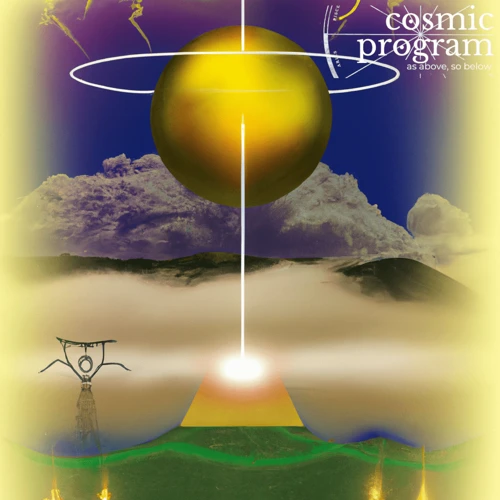
The Hindu Cosmos is a complex and expansive concept that encompasses the entirety of creation according to Hindu mythology. It is a vast and intricate web of interconnecting realms, dimensions, and planes of existence. At the center of this cosmic tapestry lies Mount Meru, believed to be the axis mundi, the cosmic axis around which the universe revolves. Surrounding Mount Meru are the concentric realms known as Lokas, each housing different gods, goddesses, and celestial beings. The upper Lokas are inhabited by deities such as Brahma, Vishnu, and Shiva, while the lower realms are home to various demons and other celestial entities. The Hindu Cosmos also includes the concept of Samsara, the cycle of birth, death, and rebirth, where souls traverse different realms based on their karma. This intricate cosmology reflects the multifaceted nature of Hindu beliefs and the reverence for the divine forces that govern the universe. The Hindu Cosmos is a testament to the profound wisdom and intricacy of ancient Hindu mythology and its enduring impact on Indian culture and spirituality.
The Divine Trinity
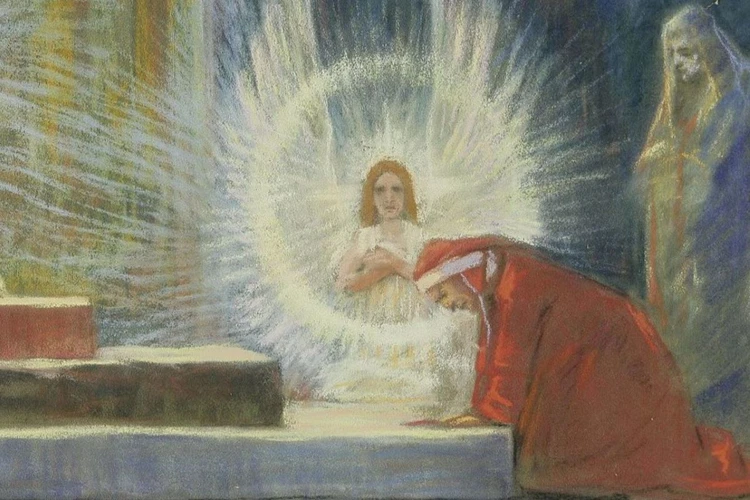
In Hindu mythology, the Divine Trinity represents the three fundamental aspects of the cosmic order and the governing forces of creation, preservation, and destruction. The Divine Trinity consists of three primary deities: Brahma, who is the creator and the one responsible for bringing forth life and all living beings into existence; Vishnu, the preserver who ensures the harmony and balance of the universe, and is believed to have incarnated on Earth in different forms such as Rama and Krishna; and Shiva, the destroyer and transformer, who brings about the dissolution of the universe in order to pave the way for its rebirth. Together, these three deities form a cosmic equilibrium that maintains the cycle of life and death, creation and destruction. Each deity represents a distinct aspect of existence, and their interplay symbolizes the perpetual cycle of cosmic forces that shape our world. The Divine Trinity is a central aspect of Hindu theology and reflects the belief in the cosmic order and the interconnectedness of all things. Whether through their individual stories and exploits or their collective representation of cosmic balance, the Divine Trinity holds great significance in Hindu mythology and spiritual practices.
1. Brahma – The Creator
Brahma, the first member of the divine trinity in Hindu mythology, is revered as the creator of the universe. As the embodiment of creativity and knowledge, Brahma is often depicted with four heads, each representing the four Vedas, the sacred scriptures of Hinduism. With his creative power, Brahma brings forth life and all the elements necessary for existence. It is believed that Brahma emerges from a lotus that sprouts from the navel of Lord Vishnu, who lies in a state of deep sleep on the serpent Shesha, floating on the cosmic ocean. While Brahma is the creator, he is not widely worshipped compared to other deities in Hinduism. This is due to a curse from his consort Saraswati, the goddess of wisdom and learning. The curse is a result of Brahma’s actions and his desire to be worshipped above all other gods. Thus, Brahma’s role as the creator is significant, but his worship is comparatively limited. The tale of Brahma as the creator highlights the complexity and diverse nature of the Hindu pantheon, where each deity holds a specific role and significance in the grand tapestry of mythology and cosmic order.
2. Vishnu – The Preserver
Vishnu, the Preserver, is one of the most revered deities in Hindu mythology. He is believed to be the sustainer of the universe and the guardian of cosmic order. Vishnu is often depicted with a dark-blue complexion, holding a conch shell, a discus, a mace, and a lotus flower in his four hands. His divine consort is Lakshmi, the goddess of wealth and prosperity. According to Hindu mythology, Vishnu reincarnates on Earth in different forms, known as avatars, to restore balance and protect dharma (righteousness). His most famous avatars include Lord Rama, Lord Krishna, and Lord Vishnu. Each avatar has a specific purpose and represents different aspects of Vishnu’s divine nature. For example, Lord Rama is known for his virtues of righteousness and duty, while Lord Krishna is revered for his teachings on love and devotion. The significance of Vishnu as the Preserver lies in his eternal commitment to maintaining the cosmic order and ensuring the well-being of all living beings. Through his avatars, Vishnu guides humanity toward righteousness and protects them from evil forces. The devotion and worship of Vishnu play a vital role in Hindu religious practices, and his stories and teachings continue to inspire millions around the world. [Greek-alphabet-significance.]
3. Shiva – The Destroyer
Shiva, known as the Destroyer, plays a pivotal role in Hindu mythology and the cosmic cycle. He is often depicted as a fierce and powerful deity, with matted hair, a serpent around his neck, and a third eye on his forehead. Shiva’s role as the destroyer is not one of malevolence, but rather an essential part of the cosmic balance. Just as creation and preservation are important aspects of the Hindu cosmos, destruction is necessary for rebirth and renewal. Shiva’s destructive powers are symbolized through cosmic events such as natural disasters, storms, and even the passage of time. With a mere dance, known as the Tandava, Shiva can bring about the end of a cycle and initiate the process of creation once again. Shiva’s duality as both creator and destroyer reflects the cyclical nature of existence in Hindu mythology. While Brahma creates, Vishnu preserves, and Shiva destroys, these roles are not seen as separate entities but rather interconnected aspects of the divine trinity. Shiva’s significance as the Destroyer is a testament to the profound understanding of the cyclic nature of life and the belief in the regenerative power of destruction in Hindu cosmology.
The Mythological Tale of Creation
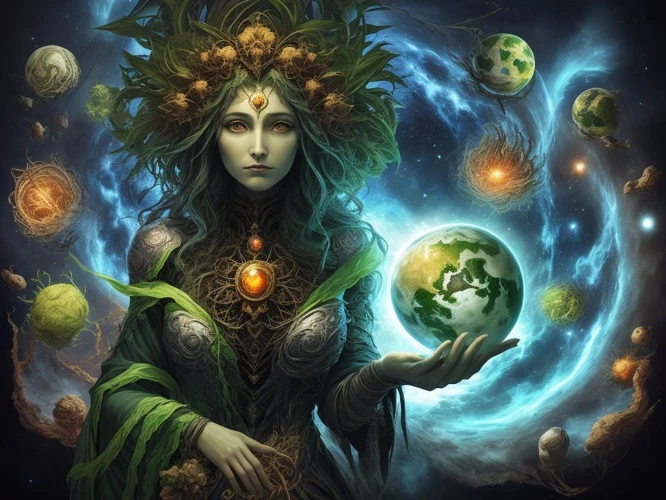
The Mythological Tale of Creation in Hindu mythology is a captivating narrative that unveils the origins of the universe. According to Hindu beliefs, the story begins with the existence of the cosmic egg, or Hiranyagarbha, floating in the primordial waters. Within this cosmic egg, the potential for creation lay dormant. As the egg cracked open, Brahma, the creator god, emerged. Brahma then embarked on the task of bringing the universe into being. Through his divine powers, Brahma shaped the cosmos, the celestial bodies, and all living beings. However, the creation story doesn’t end there. It delves deeper into the intricate details of how Brahma gave birth to various gods, demigods, animals, and humans, each with their unique roles and responsibilities. Every element in the universe was carefully crafted by Brahma’s creative prowess, setting the stage for the grand play of life to unfold. This mythological tale of creation is a testament to the rich imagination and storytelling prowess of Hindu mythology, offering insights into the profound mysteries of our existence.
1. The Cosmic Egg
In Hindu mythology, the concept of the Cosmic Egg is a central aspect of the creation story. It symbolizes the beginning of existence and the potential for all life to emerge. According to the myth, before the universe came into being, there was nothing but emptiness and darkness. In this void, a cosmic egg, known as the Hiranyagarbha, formed spontaneously. Within the egg, the entire universe, including the gods and all living beings, lay dormant, waiting for creation to unfold. This egg is often depicted as a golden, radiant sphere, representing the boundless energy and potential that would later manifest. The breaking of the cosmic egg signifies the birth of Brahma, the creator deity. From the remains of the egg, Brahma emerged, ready to bring life and form to the universe. The symbolism behind the Cosmic Egg highlights the cyclical nature of creation, the eternal cycle of birth, growth, decay, and rebirth that permeates Hindu cosmology. It emphasizes the infinite possibilities and continuous regeneration that exist in the universe. Through the imagery of the Cosmic Egg, Hindu mythology tells a profound tale of the origins of existence and the eternal power of creation. To learn more about the significance of ancient myths, visit /significance-ophiuchus-ancient-mythology/.
2. The Emergence of Brahma
The Emergence of Brahma marks a pivotal moment in the Hindu creation story. According to mythology, after the Cosmic Egg was formed, it remained in a state of dormancy for a thousand years. Then, out of the primal waters, Brahma spontaneously emerged, seated on a lotus flower. Brahma, also known as the Creator, is depicted as a four-headed deity, representing his vast knowledge of the four Vedas. His four heads symbolize the cardinal directions and the omniscience with which he governs the universe. Brahma’s emergence signifies the beginning of the cosmic order and the manifestation of the material world. As the lotus blossomed, so did the universe, with Brahma taking on the responsibility of shaping and populating it with life forms. It is believed that Brahma’s divine power stems from the supreme force known as Brahman, the ultimate reality in Hindu philosophy. Though Brahma is revered as the Creator, his worship is not as prevalent as that of Vishnu and Shiva, who represent the roles of preservation and destruction in the cosmic cycle. Nevertheless, Brahma’s emergence is a crucial part of the Hindu creation story, serving as the catalyst for the formation and sustenance of the universe.
3. The Creation of the Universe
Within the grand tapestry of Hindu mythology, the creation of the universe is an awe-inspiring event that unfolds with divine power and cosmic significance. According to Hindu belief, the process begins with the emergence of Brahma, the creator deity, from the cosmic egg. As Brahma arises, he brings forth the cosmic elements – earth, water, fire, air, and ether – which lay the foundation for the physical realm. With his four heads, Brahma creates the gods, goddesses, and all living beings, each assigned their specific roles and responsibilities. The universe is shaped and inhabited by diverse creatures, celestial beings, and realms, all intricately interconnected. The creation of the universe reflects the divine play of cosmic forces and the eternal cycle of creation, preservation, and destruction, known as Srishti, Sthiti, and Samhara. It is through this cosmic dance that the universe unfolds, embodying the profound wisdom and intricate symbolism of Hindu mythology. To delve deeper into the significance and symbolism of creation across different cultures, you can explore the significance of the Greek alphabet or the interpretation of planetary symbols in ancient mythology.
The Role of Deities and Elements
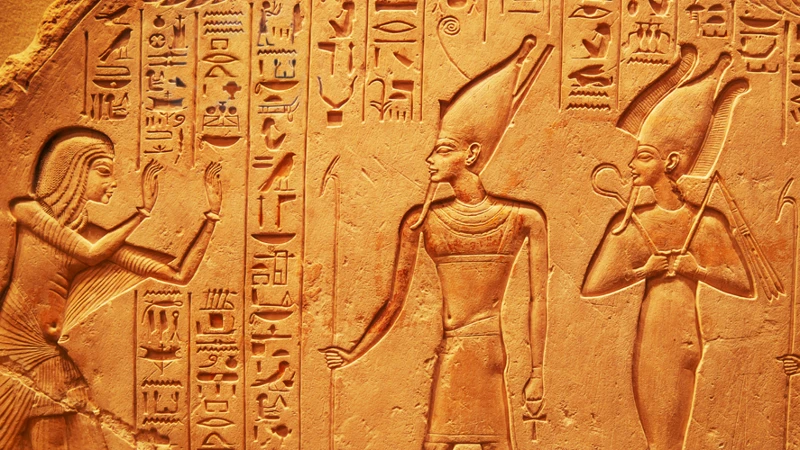
In Hindu mythology, the role of deities and elements is crucial in shaping the cosmic order and maintaining balance in the universe. Each deity represents a specific force or aspect of nature, embodying its power and influence. Indra, the God of Thunder and Rain, controls the celestial phenomena of lightning and rainfall, ensuring fertility and prosperity. Agni, the God of Fire, symbolizes transformation and purification, serving as a link between humans and gods during rituals. Surya, the Sun God, radiates warmth, light, and life-giving energy, illuminating the world and providing sustenance to all living beings. Varuna, the God of the Oceans, governs the vast waters, maintaining cosmic order and protecting the boundaries between the earthly and divine realms. Prithvi, the Earth Goddess, represents the fertile and nurturing aspect of nature, providing sustenance and stability to all life forms. These deities, along with various other gods and goddesses, form a divine tapestry intricately woven within Hindu mythology, highlighting the profound connection between the natural elements and the spiritual realms. Their roles and attributes reflect the deep reverence and respect for nature that is ingrained in Hindu culture and philosophy.
1. Indra – The God of Thunder and Rain
Indra, known as the god of thunder and rain, holds a significant role in Hindu mythology. He is revered as the king of the gods and is associated with power, strength, and fertility. Indra wields the powerful weapon called Vajra, a thunderbolt that symbolizes his control over lightning and storms. As the ruler of the heavens, Indra is responsible for the timely arrival of monsoons, which bring life and abundance to the earth. His thunderous roar is believed to drive away evil forces and protect the world from chaos. Indra’s stories are filled with epic battles against demons and evil forces, showcasing his bravery and heroism. He is also known for his indulgence in soma, a divine drink that grants immortality. Despite his exalted status, Indra is not without flaws. He is often portrayed as impulsive and easily seduced by superficial pleasures. Nevertheless, Indra’s role as the god of thunder and rain remains pivotal in the Hindu pantheon, symbolizing the vital force that sustains life and the continuous cycle of renewal.
2. Agni – The God of Fire
In Hindu mythology, Agni, often referred to as the “God of Fire,” occupies a significant and revered position among the pantheon of deities. Agni is considered the intermediary between the gods and humans, serving as a symbol of divine energy and transformation. His presence is not limited to physical fire alone but encompasses the fire of knowledge, passion, and spiritual enlightenment. Agni is depicted as having a radiant and fiery appearance, symbolizing his intense power and purifying abilities. He is portrayed with multiple faces and arms, often depicted riding a chariot pulled by fiery horses. Agni’s role in Hindu cosmology is multifaceted. He is believed to consume oblations and offerings made during religious ceremonies, acting as a conduit between devotees and the divine. Additionally, Agni plays a vital role in the cycle of creation, as he possesses the power to invoke and transform matter. He is known as the messenger of the gods, carrying messages and prayers from the mortal realm to the celestial realms. The worship of Agni is deeply ingrained in Hindu rituals, with fire being central to numerous ceremonies, including weddings, funerals, and daily household rituals. Agni’s significance extends beyond the physical realm, as he represents the transformative and purifying aspects of fire, symbolizing the burning away of impurities and the awakening of spiritual consciousness. The worship of Agni serves as a reminder of the interconnection between the material and spiritual worlds and the importance of harnessing the power of fire for both physical and spiritual nourishment.
3. Surya – The Sun God
Surya, the Sun God, holds a significant position in Hindu mythology and is revered as the divine embodiment of the sun. As one of the most revered and powerful deities, Surya is depicted with radiant golden skin, driving a chariot drawn by seven horses, representing the seven days of the week. Surya is not only the physical source of light and warmth but also considered the soul of the universe. He is often portrayed with two hands holding a lotus flower and giving blessings to his devotees. Surya is believed to possess divine qualities such as wisdom, knowledge, and healing powers. Hindus worship Surya for his ability to grant good health, vitality, and prosperity. The Rigveda, one of the oldest Hindu texts, contains prayers and hymns dedicated to Surya, emphasizing his role as a source of light, life, and energy. As the sun rises each morning, it is believed to dispel darkness and bring forth a new day, symbolizing the triumph of light over darkness. Surya holds great significance in Hindu rituals, festivals, and traditions. The festivals of Chhath Puja and Makar Sankranti celebrate Surya and his benevolence. The worship of Surya also extends to include other deities such as Surya’s wife, Saranyu, and their offspring, the Asvins. Through his radiant presence, Surya reminds us of the life-giving force of the sun and its symbolic importance in Hindu mythology and culture.
4. Varuna – The God of the Oceans
Varuna, the God of the Oceans, holds a significant role in Hindu mythology. He is depicted as the supreme deity of water, presiding over the vast oceans, rivers, lakes, and other bodies of water. Varuna is often portrayed as a regal figure, adorned with a dazzling crown and holding a noose to symbolize his power and authority over the waters. As the god of oceans, Varuna is revered for his ability to control the tides, currents, and the life-giving properties of water. He is also associated with justice and cosmic order, as he is believed to oversee the moral and ethical conduct of humans. In Hindu mythology, Varuna is not just a deity but a divine force that maintains balance and harmony in the world. His importance is highlighted in ancient Vedic hymns, where he is praised for his role in preserving the natural order and granting blessings to those who honor him. The significance of Varuna in Hindu mythology demonstrates the deep respect and reverence that the ancient Hindus had for water and its life-sustaining properties.
5. Prithvi – The Earth Goddess
Prithvi is a prominent deity in Hindu mythology, revered as the Earth Goddess. She represents the physical embodiment of the planet Earth and is considered the mother of all beings. Prithvi is depicted as a benevolent and nurturing goddess, providing sustenance, fertility, and abundance to all living creatures. In Hindu cosmology, she is often depicted as a beautiful woman with a luscious green appearance, symbolizing the fertility and abundance of the Earth. Prithvi is highly regarded and worshipped for her vital role in the cycle of creation. It is believed that all lifeforms, plants, animals, and humans, derive their sustenance and existence from her. Prithvi is also associated with stability, grounding, and the material realm. She is revered as the foundation of life and the source of nourishment. In Hindu rituals and ceremonies, devotees offer prayers and offerings to Prithvi to seek her blessings for a bountiful harvest, abundance, and prosperity. The Earth Goddess holds a significant position in Hindu mythology, showcasing the deep reverence and connection that Hinduism fosters with nature and the natural world.
The Cycle of Creation, Preservation, and Destruction
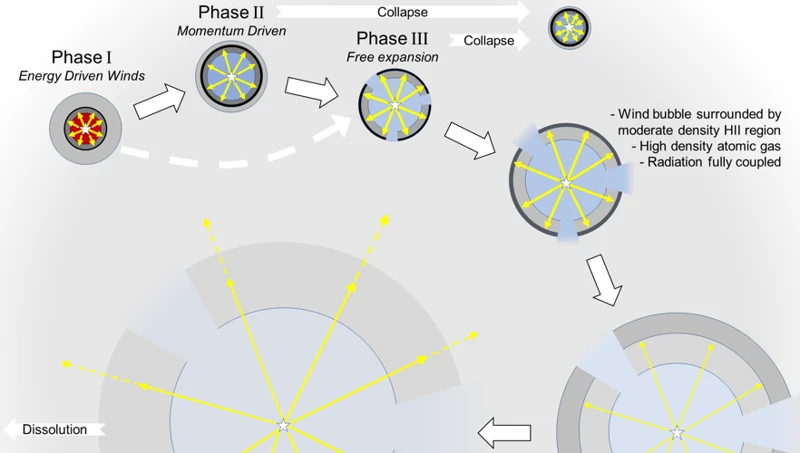
The cycle of creation, preservation, and destruction is a fundamental concept in Hindu mythology, representing the continuous and cyclical nature of the universe. This cosmic process is intricately woven into the fabric of Hindu beliefs and is governed by the divine trinity of Brahma, Vishnu, and Shiva. Brahma, as the creator, brings forth the universe from a cosmic egg, giving rise to all life forms and elements. Vishnu, the preserver, maintains the balance and harmony of creation, ensuring its continued existence. Shiva, the destroyer, brings about the dissolution of the universe, clearing the way for new cycles of creation. This cycle repeats itself endlessly, with each phase seamlessly transitioning into the next. It reflects the dynamic and ever-changing nature of life and the understanding that creation and destruction are interconnected and necessary for the cycle to perpetuate. This profound concept of the cycle of creation, preservation, and destruction offers insights into the transient nature of existence and the cyclical patterns that govern the universe.
1. The Expanding and Contracting Universe
The Hindu creation story encompasses the cyclical nature of the universe, which goes through phases of expansion and contraction. According to ancient Hindu texts, the universe is believed to undergo cycles of creation, preservation, and destruction known as Yugas. The expansion phase, called the Brahma Kalpa, begins when Lord Brahma breathes life into the universe, causing it to expand and evolve. During this phase, galaxies, stars, and planets are formed, and life flourishes across various worlds. As time progresses, the universe reaches its peak, and a period of stability and preservation ensues. This phase is called the Vishnu Kalpa, where the divine force of Lord Vishnu maintains the balance and sustains life. However, after a vast span of time, the universe starts contracting in a process called Pralaya. During this contraction phase, all life forms, including deities and worlds, dissolve back into their elemental forms. The cycle then repeats, with Lord Brahma once again initiating the expansion and the creation of a new universe. This timeless cycle of expansion and contraction reflects the Hindu belief in the eternal nature of the cosmos and the continuous cycle of birth and death that governs all aspects of existence. It exemplifies the Hindu understanding of creation as a dynamic and ever-changing process, woven into the fabric of the universe itself.
2. The Multiple Lifetimes of the Universe
The concept of the multiple lifetimes of the universe is a central tenet of Hindu mythology. According to Hindu belief, the universe undergoes a cyclical process of creation, preservation, and destruction. Each cycle, known as a Kalpa, spans an incredibly vast period of time, equivalent to trillions of years in human reckoning. During the lifespan of the universe, it goes through a series of stages, starting with its creation and subsequently undergoing periods of sustained existence and eventual dissolution.
In Hindu mythology, the multiple lifetimes of the universe are portrayed as a majestic cosmic dance performed by Lord Shiva, the destroyer aspect of the divine trinity. Shiva’s dance symbolizes the eternal rhythm of creation and destruction, indicating that the universe is in a constant state of flux. The destruction of the universe is not seen as a cataclysmic event but rather as a necessary part of the cosmic order.
At the end of each Kalpa, the universe is said to enter a state of dissolution, where all forms and manifestations merge back into their primordial state. This dissolution is often referred to as Pralaya, a state of cosmic rest. Once the dissolution is complete, the universe re-emerges in a new cycle of creation, marking the beginning of a new Kalpa.
The cycle of multiple lifetimes showcases the Hindus’ understanding of the impermanence and transience of existence. It highlights the interconnectedness of all things and emphasizes the cyclical nature of time and the universe itself. Through this understanding, Hindu mythology offers a profound perspective on the grandeur and eternal pulsation of the cosmos, encouraging individuals to contemplate their place within this ever-unfolding cosmic drama.
3. The Dissolution and Rebirth of the Universe
The Dissolution and Rebirth of the Universe is a pivotal aspect of Hindu mythology, outlining the cyclical nature of existence. According to Hindu cosmology, the universe goes through repetitive cycles of creation, preservation, and ultimately destruction. This process is known as Pralaya. During this phase, all living beings and celestial entities cease to exist, and everything is dissolved back into the cosmic energy. This dissolution occurs when Lord Shiva performs the Tandava, a cosmic dance that signifies the end of one era and the beginning of another. The universe is then engulfed in a cataclysmic event known as Mahapralaya, where everything is immersed in the primordial waters. The process of dissolution is essential for the rebirth of the universe. After the dissolution, Lord Brahma re-emerges from the navel of Lord Vishnu, who resides in cosmic sleep on the serpent Adishesha. Brahma then begins the process of creation once again, giving rise to a new cycle of existence. This cyclical pattern of dissolution and rebirth reflects the belief in eternal cosmic cycles within Hindu mythology, symbolizing the constant flux and regeneration of the universe. It is a profound reminder of the impermanence of all things and the eternal nature of cosmic energy.
Conclusion
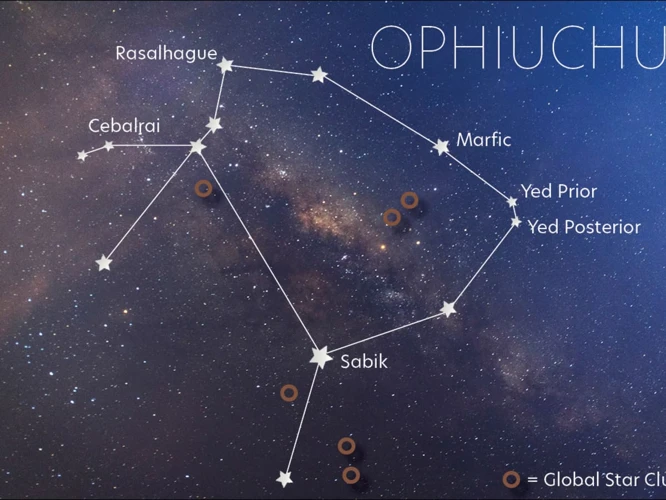
In conclusion, the Hindu creation story offers a captivating glimpse into the origins and workings of the universe according to ancient Hindu mythology. Through the divine trinity of Brahma, Vishnu, and Shiva, the mythological tale of creation, and the role of various deities and elements, we gain a deeper understanding of the intricate tapestry that forms the Hindu Cosmos. This cosmology is not just a mere creation myth but a reflection of the profound spiritual beliefs and philosophical concepts held by Hinduism. It emphasizes the cyclical nature of existence, where creation, preservation, and destruction are interconnected and necessary for the continuous renewal of the universe. The Hindu Cosmos also highlights the significance of karma and the concept of Samsara, reminding us of the interconnectedness of all living beings and the importance of leading a virtuous life. As we contemplate the complexities and symbolism embedded within Hindu mythology, we are reminded of the immeasurable depths of human imagination and the universal quest to understand the mysteries of our existence. The Hindu creation story continues to inspire, captivate, and offer insights into the nature of reality, encouraging us to delve into the profound depths of our own spiritual journeys.
Frequently Asked Questions

1. What is the significance of Mount Meru in the Hindu Cosmos?
Mount Meru holds immense importance in the Hindu Cosmos as it is considered the cosmic axis around which the universe revolves. It is believed to be the center of the universe and the dwelling place of gods and celestial beings.
2. Who are the main deities associated with the Hindu Cosmos?
The main deities associated with the Hindu Cosmos are Brahma, Vishnu, and Shiva. Brahma is the creator, Vishnu is the preserver, and Shiva is the destroyer. Together, they represent the cosmic forces that maintain the balance of the universe.
3. What is the concept of Samsara in the Hindu Cosmos?
Samsara is the cycle of birth, death, and rebirth that is central to Hindu belief. According to this concept, souls undergo multiple lifetimes, traversing different realms based on their actions and karma, until they attain spiritual liberation or Moksha.
4. Are the Lokas in the Hindu Cosmos physical or metaphorical realms?
The Lokas in the Hindu Cosmos are believed to be both physical and metaphorical realms. While they are thought to exist in higher dimensions, they also symbolize different states of consciousness and levels of spiritual attainment.
5. How do the deities in the Hindu Cosmos interact with each other?
The deities in the Hindu Cosmos interact with each other through their respective roles in the cosmic order. Brahma creates the universe, Vishnu preserves it, and Shiva destroys it to pave the way for new creation. This cyclical process ensures the continuous flow of cosmic energy.
6. What is the role of karma in the Hindu Cosmos?
Karma plays a significant role in the Hindu Cosmos as it determines the trajectory of an individual’s journey through Samsara. It is the law of cause and effect, where one’s actions and intentions have consequences that shape their future experiences and determine their spiritual progress.
7. Can beings from different realms interact in the Hindu Cosmos?
According to Hindu mythology, beings from different realms can interact with each other. Gods, demons, and humans are known to have interactions in various mythological stories. However, the degree and nature of such interactions may differ based on the realm and the beings involved.
8. How does the Hindu Cosmos reflect the concept of duality?
The Hindu Cosmos reflects the concept of duality by encompassing both positive and negative forces. The presence of gods and goddesses representing creation, preservation, and destruction represents the interplay of opposing but complementary cosmic energies that maintain balance and harmony in the universe.
9. Is the Hindu Cosmos a static or dynamic concept?
The Hindu Cosmos is a dynamic concept that emphasizes the cyclical nature of creation, preservation, and destruction. It signifies that the universe is not static but in a constant state of flux, undergoing perpetual cycles of cosmic expansion and contraction.
10. How does the Hindu Cosmos influence Hindu rituals and spiritual practices?
The belief in the Hindu Cosmos deeply influences various rituals and spiritual practices. For example, the worship of different deities is often performed to seek their blessings and guidance in specific aspects of life. Additionally, meditation and yoga are practiced to attain spiritual enlightenment and transcendence beyond the limitations of the material world.
References
Frequently Asked Questions

1. What is the significance of the Hindu creation story?
The Hindu creation story holds great significance as it offers insights into the origins of the universe, the roles of deities, and the cyclical nature of creation, preservation, and destruction.
2. How does the Hindu creation story explain the origin of the universe?
The Hindu creation story explains that the universe emerged from a cosmic egg, which symbolizes the potential for creation. It highlights the role of Brahma as the creator and the subsequent formation of the universe.
3. Who are the key deities in the Hindu creation story?
The Hindu creation story revolves around the divine trinity of Brahma, Vishnu, and Shiva. Brahma is the creator, Vishnu is the preserver, and Shiva is the destroyer.
4. What is the role of Brahma in Hindu mythology?
Brahma is regarded as the ultimate creative force in Hindu mythology. He is responsible for the creation of the universe and all living beings.
5. How does the Hindu creation story address the cyclical nature of the universe?
The Hindu creation story highlights the cyclical nature of the universe, wherein it expands and contracts over multiple lifetimes. This cycle of creation, preservation, and destruction repeats endlessly.
6. Who is Indra in Hindu mythology?
Indra is the god of thunder and rain in Hindu mythology. He is considered a vital deity in the creation story as he controls the weather, ensuring balance and harmony in the universe.
7. What role does Agni play in the Hindu creation story?
Agni is the god of fire and plays a crucial role in the Hindu creation story. Fire is seen as a transformative element and is central to the process of creation and destruction.
8. Who is Surya in Hindu mythology?
Surya is the sun god in Hindu mythology. He is revered as the source of light, energy, and life and is an essential component of the creation and sustenance of the universe.
9. What is the significance of Varuna in the Hindu creation story?
Varuna is the god of the oceans and represents the vastness and depth of the universe. He symbolizes the interconnectedness of all elements and plays a role in maintaining cosmic order.
10. Who is Prithvi in Hindu mythology?
Prithvi is the earth goddess in Hindu mythology. She represents the physical realm of existence and is vital for the sustenance and nurture of all forms of life.
References
- Does Hinduism also have the Creation Story?
- How the universe was created according to Hinduism?
- The Hindu Creation Story







